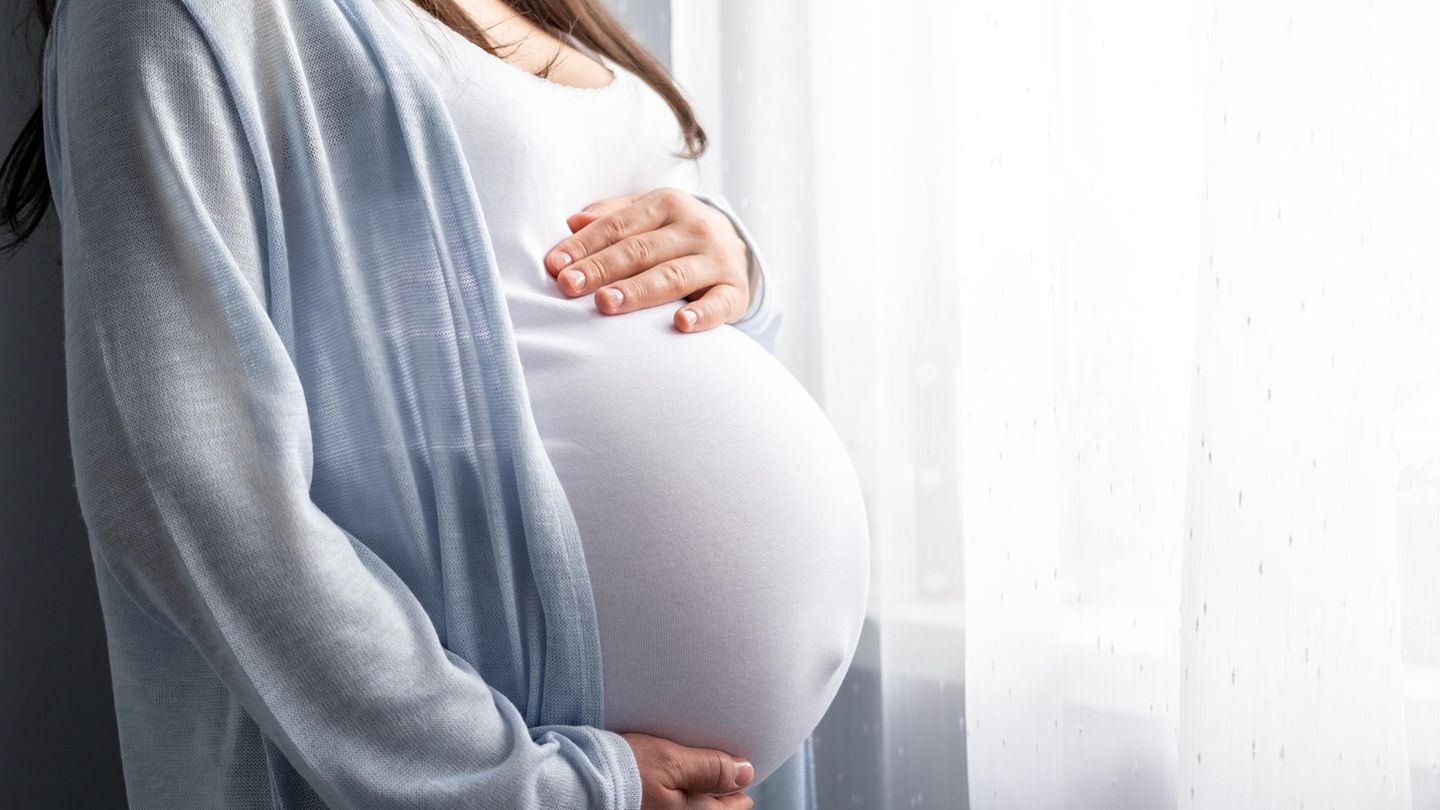Since the beginning of the pandemic, Professor Ulrich Pecks has been studying how a Covid 19 infection affects pregnant women. He runs a register in which data on this is collected. In an interview, he explains the risks of infection during pregnancy and what doctors have learned over the past two and a half years.
You have been collecting data on pregnant women and Covid-19 since 2020. What did you learn? And how much data have you collected so far?
Ulrich Pecks: In these almost two and a half years, we have collected data from around 7,700 women who became infected with Covid-19 during pregnancy. We learned a lot about data collection itself, how complex it actually is and how much manpower is ultimately required for collection and analysis. We always had to carry out the evaluations against the background of the current dynamics in the pandemic. In our, for example, we compare the pandemic period from January to June of this year, i.e. the omicron wave, with the period up to August 2021, i.e. until the beginning of the delta wave.
During the course of the pandemic, we have learned that there are different variants of the virus. With each new virus variant, we first noticed an increase in severe courses in pregnant women. In the wild type, around two to three percent of pregnant women suffering from Covid-19 were treated in intensive care, four percent in the alpha variant and seven percent in the delta variant.
What has changed with Omikron?
With Omikron, this effect was suddenly gone. This is certainly also due to the fact that we as physicians have learned more about the infection during the course of the pandemic and can therefore treat patients better and better. In terms of severe courses, however, Omikron also appears to be more harmless than the previous variants. Many women are now also vaccinated. We have been able to determine that vaccinated pregnant women were less frequently admitted to hospital due to a Covid-19 infection in the omicron wave than unvaccinated pregnant women. And they needed oxygen less frequently. However, the vaccination had no effect on the number of women treated in intensive care, since with the milder omicron wave hardly any women become so seriously ill.
The number of stillbirths has increased since 2010. Can you explain why that might be? And what influence do corona infections in pregnant women have on the number of stillbirths?
There are certainly different reasons for this. The basic risk profile among pregnant women has increased since 2010. For example, in recent years we have seen an increasing number of women who became obese when they became pregnant. Obesity is a risk factor for stillbirth. Women with diabetes are also more likely to have a stillbirth than women who do not have diabetes. 20 to 30 years ago, women with type 1 diabetes never got pregnant in the first place. With modern medicine, however, you can become pregnant – but you have a higher risk. Since 2010, the rate of children born through artificial insemination has almost doubled – these pregnancies are also associated with a certain risk of pregnancy complications.
The question now is how Covid-19 is involved here. A Sars-CoV-2 infection during pregnancy increases the risk of stillbirth. According to our calculations, the stillbirth rate for pregnant women who had a symptomatic Covid 19 infection is 1.2 percent. So 12 out of 1000 babies are stillborn. Normally, three or four out of 1000 babies are stillborn. So that’s three times the normal stillbirth rate. This value refers to infections before the omicron variant.
However, the relatively small number of women who had Covid-19 during pregnancy will not alone have accounted for the increased proportion of stillbirths in the statistics. Especially since Covid-19 has only been around since 2020 and the increase has been evident for some time. But lockdown measures and restricted access to the health system may have had a negative impact. Women with a risk profile for stillbirth no longer had the full access to healthcare they had before the lockdowns. An example: Relative to the beginning of the pandemic, we evaluated data on Covid-19 in pregnant women with diabetes. There were 27 women and five of those women with type 2 diabetes were particularly conspicuous. Two of these five women had stillbirths. What we were able to observe with these pregnant women: their sugar levels were disastrous. These were women who, due to language barriers, may not have understood the explosive nature of the situation. In addition to bridging such language barriers in the healthcare system, it can also have had a very negative effect if access to clinics or medical practices was also made more difficult during the lockdown. Or the fear of a Covid-19 infection that deterred women from visiting a doctor.
came to the conclusion that even if the course of the disease was mild, pregnant women had more preterm births than pregnant women who had no infection. What is your experience with this?
We have also learned during the pandemic that it is incredibly difficult to read the data correctly. If we look at our register data, the number of premature births among pregnant women who only have a mild course of corona seems to be increased. However, these women often come to the clinic precisely because of a premature birth, and their infection is detected during the routine corona test for hospital admission. They are included in the data, but we do not know whether the Covid-19 infection is the cause of the premature birth. In order to find out whether the preterm birth rate is higher among mildly ill women, we would need to know the number of all mildly ill women, including those without preterm birth. However, these women often do not even know that they are infected. They fall into the so-called dark figure. It therefore remains difficult to capture the actual value. What can be said with certainty is that premature births are more common in the phase of acute infection in severe cases.
What about the risk of severe Sars-CoV-2 courses during pregnancy?
There are, of course, risk factors that women bring with them regardless of their pregnancy, such as obesity, diabetes mellitus and, to some extent, their age. However, the week of pregnancy at which a pregnant woman becomes infected has a significant influence: for women who are infected with Sars-CoV-2 in the 30th week of pregnancy, the risk of a severe course is significantly higher compared to women who are for example infect in the 15th week of pregnancy.
In my opinion, the reason why the risk of a severe Covid-19 infection is significantly increased in the later weeks of pregnancy is mainly due to the lung capacity. The uterus and embryo grow and the lung function is restricted as a result. If you can no longer ventilate the lungs as well, they become more susceptible to infection. Another aspect is that the circulation of women is significantly burdened. A woman develops a real competitive athlete’s heart during pregnancy. The blood volume increases, the pumping capacity of the heart increases and that puts an immense strain on the circulatory system. The physiological stress certainly contributes to the fact that women become more susceptible to serious illness when infected at the end of pregnancy. A third aspect is the immune system. The immune system has to be modified in such a way that the body’s own defenses are not directed against the foetus. There has to be some acceptance of the paternal genetic material in the embryo. As a result, certain defense mechanisms are suppressed and no longer work as well.
What complications can still occur as a result of a Covid-19 infection during pregnancy?
I remember two cases of premature birth in particular. We observed in both pregnant women who had to be treated in intensive care and ventilated because of their Sars-CoV-2 infection that the drop in oxygen saturation had a negative effect on the placenta. This lack of oxygen has meant that the placenta has not developed well and has partially died. In both cases we had to bring the children into the world so that they were not harmed. Luckily the kids did well.
I know of cases from other clinics where things did not end well: In one case, a pregnant woman was taken to the hospital in a desolate condition. The oxygen saturation was already so low that all the measures that were taken only helped the mother. Six weeks later, which is how long it takes to notice changes in the fetus, the doctors saw that very large holes could be seen in the child’s brain. This child had suffered damage from the oxygen deficit. It would have been born severely disabled or even died in childbirth. The woman had decided to terminate the pregnancy.
Can a pregnant woman be treated just as well for a Covid-19 infection as a non-pregnant woman?
We cannot give a pregnant woman all the medication that we would give to other Covid 19 patients. Normally, patients who need invasive ventilation are placed on their stomachs – but this is difficult for pregnant women due to their large stomachs.
How important is it that pregnant women who have not yet been vaccinated against Sars-CoV-2 do so?
Unfortunately, we don’t know what the next fall and winter will bring. It is of course possible that there is another virus variant that causes significantly more severe diseases than the omicron variant. On the other hand, we know that the corona vaccination is safe and even vaccination during pregnancy is safe. It is still a recommendation that pregnant women should also be fully vaccinated. Ideally, women should be vaccinated three times before becoming pregnant.
Source: Stern




